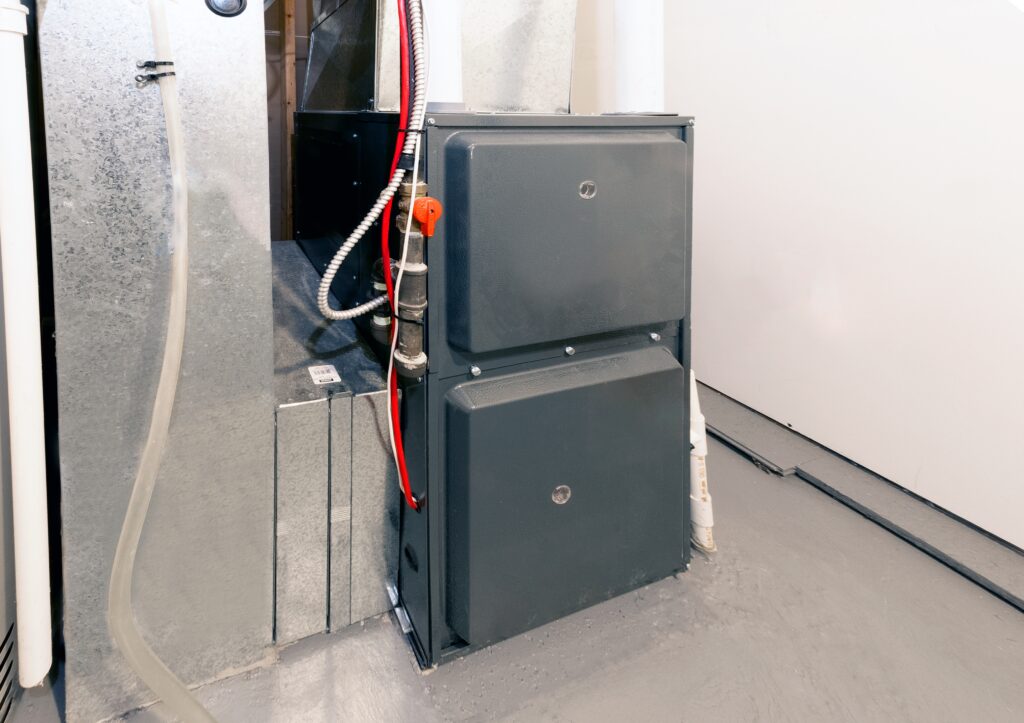Top Furnace Brands

Selecting the right furnace is one of the most critical decisions for any homeowner. Not only does it determine your home’s comfort level during colder months, but it also significantly impacts your energy bills.
According to the U.S. Department of Energy, heating accounts for nearly 45% of energy use in a typical American home. Making the wrong choice could leave you with frequent breakdowns, inefficiency, and skyrocketing costs. So how do you know which furnace brand to choose?
In this guide, we’ll walk you through the top furnace brands available today, explore key factors that you should consider, and provide comparisons to help you make an informed decision.
Table of Contents
Criteria for Selecting the Best Furnace Brands
Not all furnaces are created equal. While brand reputation plays a role, several other criteria can significantly impact your decision. Here’s what you need to consider:
1. Reliability and Durability
Reliability and durability are essential factors to ensure that your furnace performs optimally for years to come. Most furnaces are designed to last between 15 and 20 years, but not all brands offer the same longevity. Brands that prioritize high-quality materials and construction techniques tend to produce furnaces that require less frequent repairs and replacements.
For example, Trane and Carrier are renowned for their robust designs, with many users reporting minimal issues over decades of operation. Meanwhile, more budget-friendly brands like Goodman may require more frequent maintenance, but they still offer solid reliability for their price point.
According to HVAC professionals, regular maintenance—like replacing filters and scheduling annual check-ups—can extend the life of your furnace regardless of the brand. However, starting with a high-quality, durable furnace can reduce the overall cost of ownership.
2. Efficiency Ratings
One of the most important aspects of furnace performance is its Annual Fuel Utilization Efficiency (AFUE) rating. This number tells you how efficient your furnace is at converting fuel into heat. The higher the AFUE rating, the more efficient the furnace, with most modern models offering ratings between 80% and 98%.
- 80%-89% AFUE: Standard efficiency models. These furnaces are generally more affordable upfront but can result in higher long-term energy costs.
- 90%+ AFUE: High-efficiency models that save money over time by reducing fuel consumption.
Lennox leads the industry with some of the most efficient models, boasting AFUE ratings as high as 98.7%. By contrast, Goodman furnaces often offer lower efficiency options for homeowners on a budget.
A furnace with an AFUE of 98% means only 2% of the energy is lost during combustion, translating into lower utility bills. For instance, a home with a high-efficiency furnace could save up to $500 per year in heating costs, depending on fuel type and local energy prices.
3. Customer Reviews and Satisfaction
Online reviews and customer feedback provide valuable insights into real-world performance. Before purchasing, it’s wise to consult third-party review platforms like Consumer Reports or Trustpilot. Look for recurring themes—both positive and negative—in these reviews.
- Carrier and Lennox frequently receive high ratings for their quiet operation and energy efficiency.
- Goodman, while not as technologically advanced, often garners praise for its affordability and solid warranty.
Consider both professional reviews from HVAC experts and first-hand accounts from homeowners. This approach will give you a balanced perspective.
4. Warranty Options
A strong warranty can be a life-saver if something goes wrong with your furnace. Many top brands offer extensive warranties on critical components such as the heat exchanger and blower motor.
- Goodman stands out with a lifetime limited warranty on heat exchangers, which is especially beneficial for homeowners looking for peace of mind.
- Carrier and Lennox offer comprehensive warranties covering 10 years for most parts, with the option to purchase extended coverage.
Always register your furnace with the manufacturer right after installation to take full advantage of the warranty. Failing to do so could reduce the coverage period.
5. Availability of Parts and Service
Even the best furnaces will eventually need repairs, and when that happens, you’ll want easy access to replacement parts and qualified technicians. Choosing a brand with a strong service network can save you time and frustration.
Brands like Carrier and Trane have extensive dealer and service networks, ensuring that parts are readily available. By contrast, some smaller or less well-known brands might require longer waits for specific parts, leading to delayed repairs and higher costs.
Top Furnace Brands to Consider
1. Carrier
Overview: Carrier is one of the most recognized names in HVAC. Founded by Willis Carrier, the inventor of modern air conditioning, this brand has been at the forefront of heating and cooling innovations for over a century.
Notable Features: Carrier furnaces are known for their Greenspeed Intelligence, a smart technology that adjusts heating output to match the specific needs of your home. This helps to enhance both comfort and efficiency.
- Pros: High energy efficiency, smart features, extensive dealer network.
- Cons: Higher upfront costs.
- Customer Feedback: Many customers highlight Carrier’s quiet operation and efficiency. However, some mention that repair costs can be expensive if the unit is out of warranty.
2. Trane
Overview: Trane has been producing high-quality HVAC equipment for over a century. Known for their durability, Trane furnaces are built to last in even the harshest climates.
Notable Features: Trane’s ComfortLink II technology allows for seamless integration with smart home systems, optimizing comfort and energy efficiency.
- Pros: Reliable and durable, smart home compatibility, strong warranty options.
- Cons: High initial investment.
- Customer Feedback: Customers often rave about Trane’s durability, especially in colder regions where furnaces are heavily used. However, some complain about the cost of repairs and installation.
3. Lennox
Overview: Lennox leads the way in energy efficiency. Founded in 1895, the brand has built a reputation for producing innovative, high-performance furnaces.
Notable Features: Lennox furnaces offer AFUE ratings as high as 98.7%, which can result in significant energy savings over time.
- Pros: Industry-leading efficiency, quiet operation.
- Cons: Expensive upfront, limited availability of parts in some areas.
- Customer Feedback: Lennox customers often note substantial savings on energy bills, though some express concerns about the higher cost of repairs and parts.
4. Goodman
Overview: Goodman is a budget-friendly option that still delivers reliable performance. Although it doesn’t offer the advanced features of higher-end brands, Goodman provides solid, dependable furnaces at an affordable price.
Notable Features: Goodman furnaces come with a lifetime limited warranty on heat exchangers, which is a rare perk in the industry.
- Pros: Affordable, strong warranty, easy to service.
- Cons: Fewer high-tech features, lower efficiency compared to premium brands.
- Customer Feedback: Homeowners appreciate the value Goodman provides, especially for those on a tight budget. However, some reviews mention that Goodman furnaces tend to be noisier and less efficient than premium models.
Comparison of Top Furnace Brands
To help you further, here’s a breakdown of the most important factors when comparing furnace brands:
Brand | AFUE Range | Price Range | Warranty | Best For |
Carrier | 80%–98.5% | $$$$ | 10 years (parts), Lifetime (heat exchanger) | High efficiency and smart tech |
Trane | 80%–97% | $$$$ | 10 years (parts), Lifetime (heat exchanger) | Durability and smart homes |
Lennox | 80%–98.7% | $$$$$ | 10 years (parts), Lifetime (heat exchanger) | Maximum energy efficiency |
Goodman | 80%–96% | $$ | 10 years (parts), Lifetime (heat exchanger) | Budget-friendly option |
In-Depth Comparison
- Efficiency: If energy efficiency is your top priority, Lennox and Carrier are your best options. Both brands offer high-efficiency models that can drastically lower your monthly heating costs.
- Price: If you’re looking for affordability, Goodman offers reliable performance without breaking the bank. Trane and Carrier tend to be on the higher end of the price spectrum.
- Smart Technology: Carrier and Trane excel in smart technology integration, making them ideal for homeowners with smart homes.
Environmental Impact of Furnace Choices
As concerns about climate change and energy consumption grow, many homeowners are prioritizing eco-friendly furnace options. Furnaces with higher AFUE ratings not only reduce energy bills but also have a lower environmental footprint.
Green Furnace Options
Brands like Lennox and Carrier are particularly strong in this area, with models designed to use less fuel while providing the same heating output. Moreover, pairing these furnaces with renewable energy sources such as solar panels can further reduce a home’s carbon footprint.
Installation Tips and Costs
The price of a furnace doesn’t end at the sticker. Installation costs can vary widely based on the complexity of the system, your location, and the size of your home.
What to Expect During Installation
- Cost: Furnace installation typically ranges from $2,500 to $6,000, depending on the brand and model. High-efficiency furnaces tend to cost more, but the savings on energy bills often offset the initial investment over time.
- Installation Tips: When choosing an HVAC contractor, make sure they are licensed and have experience installing the specific brand of furnace you choose.
Conclusion
Choosing the right furnace for your home is an investment in comfort, efficiency, and peace of mind. With brands like Carrier, Trane, Lennox, and Goodman, there is no shortage of options tailored to different budgets and heating needs.
Whether you’re looking for cutting-edge technology, maximum efficiency, or a budget-friendly solution, the key is to weigh all factors carefully before making a decision. A quality furnace, combined with regular maintenance, will keep your home warm and energy bills low for years to come.
FAQs
What is the most common residential furnace?
The most common residential furnace is the gas furnace, due to its reliability and cost-effectiveness. Gas furnaces are popular across the U.S., especially in regions with colder winters.
What is the #1 HVAC brand?
There is no single “#1” brand, but Carrier, Trane, and Lennox are consistently ranked among the top brands for their efficiency, durability, and advanced features.
What type of furnace is most efficient?
Condensing gas furnaces with AFUE ratings above 95% are among the most efficient. These furnaces recapture waste heat and use it to further warm your home, reducing energy consumption.
How long does a typical furnace last?
A well-maintained furnace can last anywhere from 15 to 20 years. Regular maintenance, including filter replacements and annual inspections, can extend the life of your furnace.
Which furnace brands offer the best energy efficiency rebates?
Many energy providers and government agencies offer rebates for high-efficiency furnaces. Lennox and Carrier often have models that qualify for these rebates due to their high AFUE ratings.
Sources
- Modernize
- Architectural Digest
- This Old House
- Home Guide
Additional Furnace Resources
- Pros and Cons of Different Furnace Types
- How Often Should You Replace Your Furnace?
- Guide to Furnace Replacement Cost

Anna has over six years of experience in the home services and journalism industries and serves as the Content Manager at MyHomePros.com, specializing in making complex home improvement topics like HVAC, roofing, and plumbing accessible to all. With a bachelor’s degree in journalism from Auburn University, she excels in crafting localized, comprehensive guides that cater to homeowners’ unique needs. Living on both coasts of the United States has equipped her with a distinctive perspective, fueling her passion for turning any house into a cherished home through informed, personalized decision-making.








